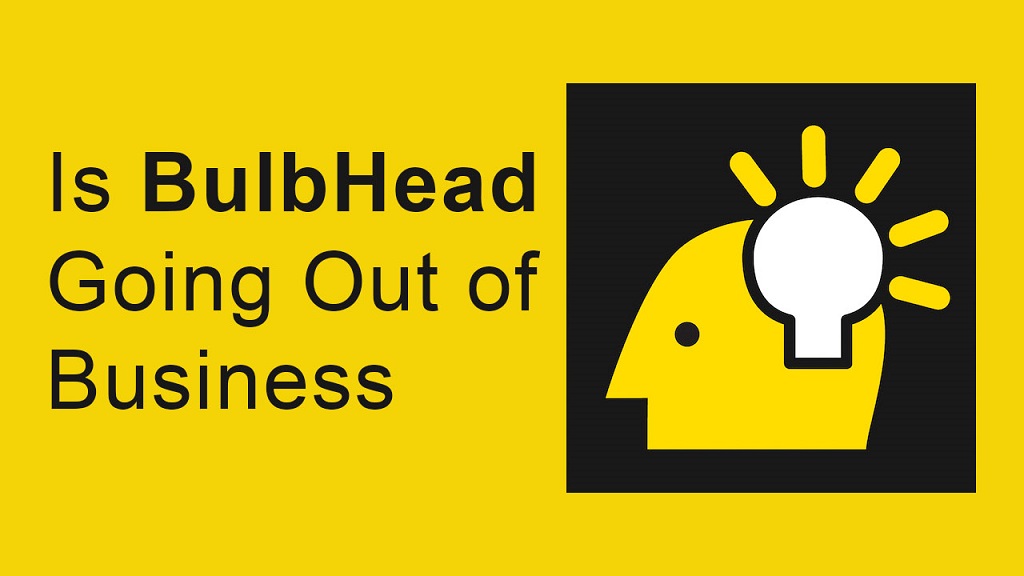
Is Bulbhead Going Out of Business?
As an avid late-night TV viewer, you’ve likely seen your fair share of Bulbhead infomercials over the years. The common question is bulbhead going out of business. The company behind the “As Seen on TV” products has become ubiquitous thanks to their quirky and sometimes kooky merchandise. From the patented comfort hover seat cushion to the hands-free soap pump, Bulbhead has made a name for itself, selling unique household gadgets directly to consumers for over 20 years.
But recently, eagle-eyed shoppers have noticed something strange – some of Bulbhead’s most popular products seem to be disappearing from store shelves. And their typically robust online inventory appears to be dwindling as well. So what gives? Is Bulbhead going out of business like some have speculated? Let’s take an in-depth look at the facts.
A Brief History of Bulbhead

Bulbhead was founded in 1996 by Cathy Mitchell and Kevin Butler. The husband and wife duo started the business out of their garage with just one product – the trap-ease rat trap. The innovative hands-free trap allowed them to capitalize on Cathy’s fame as the “Queen of QVC” to pitch their invention to the popular home shopping channel successfully.
The trap-ease became an overnight sensation, and Bulbhead was born. They began creating and marketing more unique “As Seen on TV” products to consumers looking for solutions to everyday problems. The company eventually grew into a bonafide industry leader in direct-to-consumer marketing.
Over the years, Bulbhead has sold over 400 million products worldwide. Their catalog contains over 500 gadgets designed to make life easier. Thanks to ubiquitous late-night infomercials, Bulbhead has become one of the most recognizable brands in the $300 billion direct-response industry.
Signs That Bulbhead Could Be Struggling
Lately, some subtle signs indicate that America’s favorite purveyor of quirky gadgets might be struggling.
For starters, the once robust Bulbhead online store seems to be dwindling. Shoppers have noticed that inventory for some of the company’s top sellers, like the comfort hover seat cushion or the copper chef pan, appears to be running low. Some of Bulbhead’s most popular infomercial products even appear to be sold out on their website.
There also appears to be decreased visibility for Bulbhead products in brick-and-mortar retail stores. Shoppers who once relied on finding Bulbhead favorites at the As Seen on TV store or in Walmart aisles have reported empty shelves in areas that once brimmed with trap-ease mousetraps and fushigi magic gravity balls.
Additionally, Bulbhead infomercials seem to be airing less frequently these days. The company was once infamous for its ubiquitous late-night TV ads hawking offbeat merchandise. But lately, consumers have noticed a sharp decline in Bulbhead’s typically heavy advertising spend.
While none of these observations alone cause significant concern, collectively, they paint a picture of a retailer in flux. And it begs the question – could America’s beloved purveyor of quirky, as seen on TV products, be the next retail giant to fall?
Why Bulbhead Could Be Struggling
A retail giant like Bulbhead might face turmoil in today’s rapidly evolving marketplace for a few key reasons.
1. Increased Competition
One of the most significant factors impacting Bulbhead’s business is likely increased competition. When Bulbhead launched in the ’90s, they were one of just a handful of companies using direct-response marketing to sell unique gadgets and household products directly to consumers.
But today, the As Seen on TV space has gotten incredibly crowded. Companies like Telebrands, Allstar Products, and Ontel Products have all capitalized on the direct-to-consumer business model that Bulbhead pioneered, not to mention e-commerce giants like Amazon, who sell similar novelty products for cheap.
With so many competitors eating up market share, it’s unsurprising that a pioneer like Bulbhead might struggle to keep up.
2. Market Saturation
Another factor is possible market saturation. Bulbhead has sold hundreds of millions of units over the past 20+ years. But how many trap-ease mousetraps and turbo choppers can one household own?
After decades of dominance, Bulbhead may have maxed out its potential audience. Only so many late-night TV viewers are looking for offbeat kitchen gadgets and quirky home products. Successful companies must consistently invent new products and untapped markets – something Bulbhead has struggled with in recent years.
3. Legal Troubles
Bulbhead has also faced some legal troubles that may impact its operations over the years. In 2012, the company settled a lawsuit brought by mechanical mousetrap maker Kness. Kness claimed Bulbhead engaged in fraud by falsely claiming to have patented their trap-ease design.
While the settlement terms were confidential, protracted legal battles like this can be resource-draining for companies. Lawsuits can divert resources from critical business needs like product development, marketing, and customer service.
Even if the direct financial impact is minimal, the distraction of major litigation is often detrimental for companies. And Bulbhead’s marketing messaging took a credibility hit with the patent scandal.
4. Changing Consumer Habits
It’s also possible that evolving consumer habits and demographics are making Bulbhead’s business model less relevant. Millennials and Gen Z consumers are incredibly tech-savvy. And they often don’t respond well to the cheesy late-night infomercial style that Bulbhead relies so heavily on.
Younger consumers want to research products extensively online before purchasing. They’re also wary of claims that seem overhyped or gimmicky. Much of Bulbhead’s product lineup might seem obsolete or unnecessary to younger demographics.
Adapting marketing and products to appeal to new generations is crucial for As Seen on TV companies. And Bulbhead seems to have struggled to change with the times.
5. Supply Chain Disruptions
Finally, supply chain disruptions caused by COVID-19 likely created significant challenges for a company like Bulbhead, which is built around sourcing and selling manufactured goods. Over the past two years, inventory has been tricky to stock reliably between overseas factory shutdowns and freight transportation bottlenecks.
Supply chain issues could be the straw that breaks the camel’s back for a company already facing business model challenges. Struggling to stock shelves online and in retail stores prevents customers from purchasing and damages brand loyalty long-term.
Is Bulbhead Going Bankrupt?
So, do these challenges spell the demise of America’s favorite purveyor of quirky as seen on TV products? Is Bulbhead destined to follow in the footsteps of late-night marketing contemporaries like the Ronco Showtime Rotisserie and miss the 4 AM infomercial block forever?
Not necessarily
Despite concerning signs, there are a few reasons why bankruptcy might not be imminent:
- Strong Brand Recognition – Despite dropping sales, Bulbhead has robust name recognition built over decades of omnipresent marketing. Consumer loyalty and nostalgia are powerful forces.
- Valuable Intellectual Property – Bulbhead’s patents on dozens of unique products could remain valuable assets during a sale. Trap-ease alone is one of the most successful consumer products ever patented.
- Trendiness of Retro Brands – A buyer for Bulbhead could bank on the trendiness of reinvigorating retro brands. The company’s kitschy 90s/2000s infomercial aesthetic could be utilized successfully by a buyer.
- Possible Pivot to E-Commerce – A more digitally savvy buyer might be able to modernize and revive the brand by focusing more on e-commerce vs traditional retail and TV.
So, while the signs are troubling, don’t expect America’s beloved late-night infomercial giant to fade into total obscurity. Brand recognition this strong is complex to kill off entirely.
But to survive, Bulbhead must adapt to modern retail and consumer realities. A renewed focus on digital commerce and utilizing social media for marketing would help attract younger demographics. Streamlining logistics and supply chain operations would also strengthen backend business operations.
And most importantly, needs to return to its roots – finding innovative solutions for everyday problems. More hits like the trap-ease and fewer misses like the pasta boat.
It remains to be seen whether the of old can successfully transform itself for the modern retail world. But with the right strategy and leadership, the company could potentially have another 20+ years of quirky gadgets, cheesy infomercials, and American consumerism ahead of them.
FAQs
Q: Is Bulbhead bankrupt yet?
A: As of February 2023, Bulbhead has not officially declared bankruptcy. The company does appear to be struggling but still seems to be operating. However, with concerning trends like low inventory and decreased advertising, the future remains uncertain unless Bulbhead can adapt its business model.
Q: What happened to Bulbhead’s infomercials?
A: Bulbhead infomercials were once ubiquitous on late-night TV. But viewers have noticed a sharp decline in airtime over the past few years. This is likely due to decreasing ad spend from Bulbhead due to financial struggles. The company may no longer be able to afford the once-omnipresent infomercial campaign.
Q: Where can I buy Bulbhead products right now?
A: Many significant retailers that previously carried Bulbhead products seem out of stock. Your best bet is to check the Bulbhead website, although inventory there also appears to be dwindling. If purchasing from the official website, be aware that shipping times may be delayed.
Q: Is Bulbhead looking for a buyer?
A: There is no public indication that Bulbhead has officially put the company up for sale. However, it’s possible that with increasing struggles, the owners may look to sell Bulbhead’s valuable brand name and intellectual property to another company. This could potentially allow Bulbhead products and infomercials to continue under new ownership.
Q: What will happen to Bulbhead products if the company goes under?
A: If Bulbhead declares bankruptcy and goes out of business, other companies would likely purchase their famous product patents and trademarks during liquidation. This would allow the continuation of As Seen on TV classics under new brand names. However, the nostalgic Bulbhead branding would disappear. Let’s hope it doesn’t come to that!
The Future of Bulbhead Remains Uncertain
Bulbhead has built an iconic and nostalgic legacy since bursting onto the late-night infomercial scene in the 90’s. Their ingenious and kooky products, like the trap-ease mousetrap and the comfort hover cushion, have delighted millions. However, recent signs indicate that America’s beloved purveyor of quirky gadgets could struggle to stay afloat.
Decreased advertising, low inventory, and market saturation have all seemingly taken their toll on this once ubiquitous As Seen on TV giant. However, strong branding and consumer nostalgia make it premature to unt Bulbhead entirely. Exploring the realm of best automated business ideas, with the right strategy and leadership, the company could potentially pivot to an e-commerce and social media-focused model, catering to a new generation and maximizing its potential for success.
